The Ultimate Guide to Native Plants for American Yards
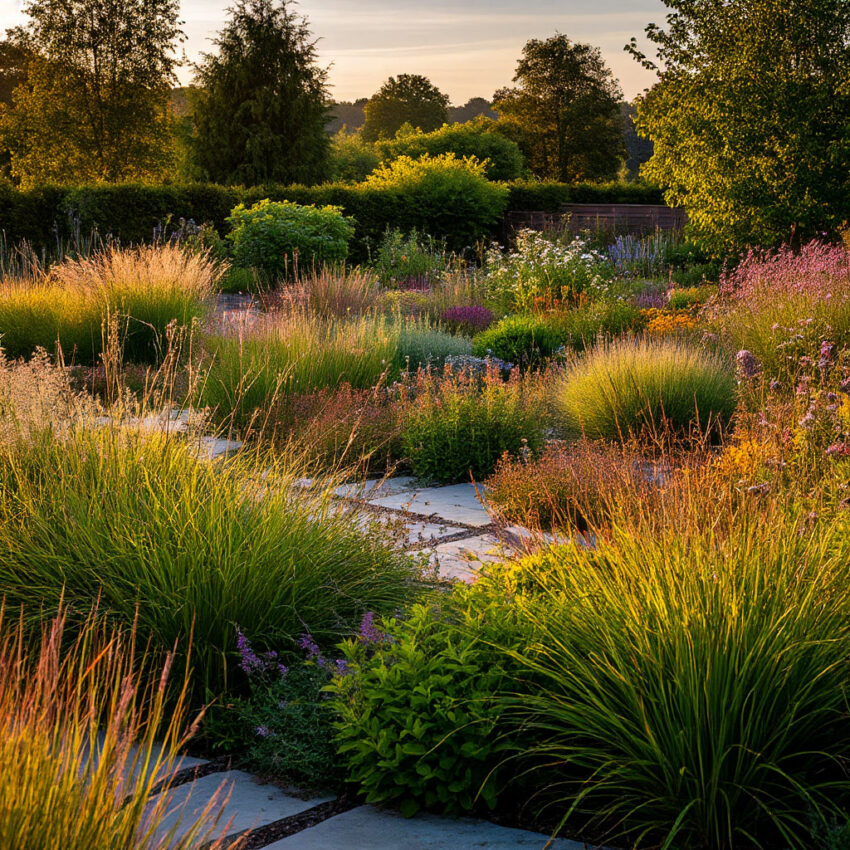
Homeowners keep asking a simple question: what native plants should I use in my yard? A clear answer starts with one idea—native plants landscaping USA means selecting trees, shrubs, grasses, and flowers that evolved in a given American region. These species fit local soils, weather patterns, and wildlife needs far better than imports. That match cuts headaches and boosts results. It also keeps money in your pocket by lowering water and maintenance costs.
Many folks want a yard that looks good and works hard. They want lower bills, fewer chemicals, and more life in the garden. That is where regional thinking becomes a real edge. A yard built on plants that belong there can ride out heat waves and cold snaps with less fuss. It also sets the stage for smart upgrades under each subsection below. At the end of the material, you can download a detailed and practical checklist for creating a garden with native plants. It is collected in convenient color blocks so that the steps are immediately visible and do not get lost in the text.
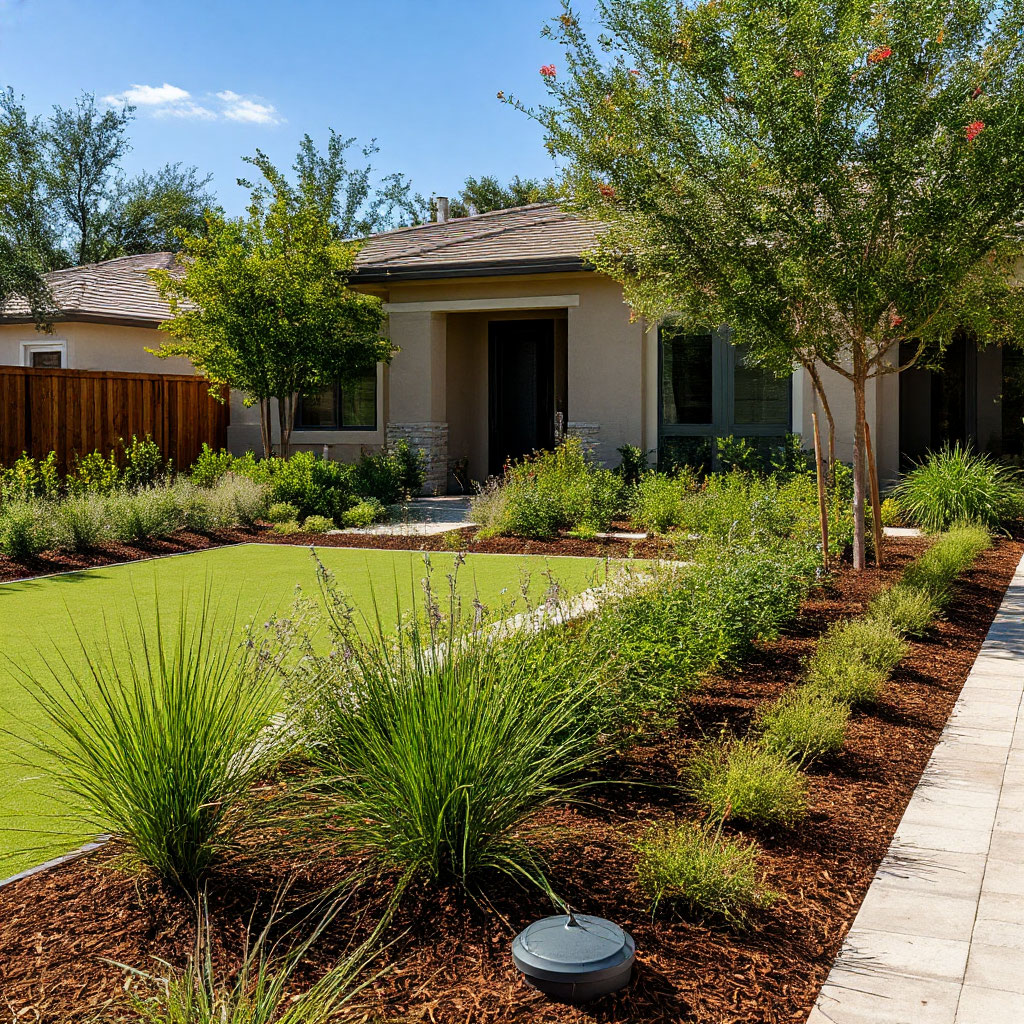
Why Native Plants Are the Future of Landscaping
Native plant choices anchor resilient, good-looking yards that waste less water and need fewer inputs. They reduce fertilizer and pesticide dependence while supporting soil life and urban biodiversity. Structure, seasonal color, and habitat arrive with less work and fewer failures. That combination fits busy households and modest maintenance crews.
Most residential landscapes were built around turf and thirsty imports. That model strains budgets and local aquifers. A shift to regionally adapted species flips the script. You get structure, seasonal color, and habitat with less work from you. That is a practical win for busy households and small crews.
“Most native insects cannot, or will not, eat alien plants.” — Doug Tallamy, entomologist and professor, University of Delaware.
The point is simple: insect food webs track local flora, and yards built on natives carry that energy up the chain to birds and small mammals.
Eco Benefits and Water Savings
Using adapted species trims water up to hundreds of gallons per month in hot states, and reduces fertilizer and pesticide use over time. Plants that evolved in place handle summer heat, spring storm bursts, and winter lows with less stress. native plants landscaping USA gives you a water-wise baseline before any smart tech goes in. Rainfall gets used, not wasted. Healthy soil biota rebounds when chemicals drop.
Steps and tips
- Start with a water budget from last year’s bills.
- Replace the thirstiest zones first, like sunny front strips.
- Swap spray heads for drip around beds and tree rings.
- Mulch three inches deep to cool roots and cut evaporation.
- Group plants by water need, then set zoned schedules.
Research spotlight: A long-running Southern Nevada program that pays residents to convert lawn documented average savings of ~55.8 gallons of water per square foot of turf removed (2021, Southern Nevada). Less water, fewer inputs, and better survival create a strong foundation for any style.
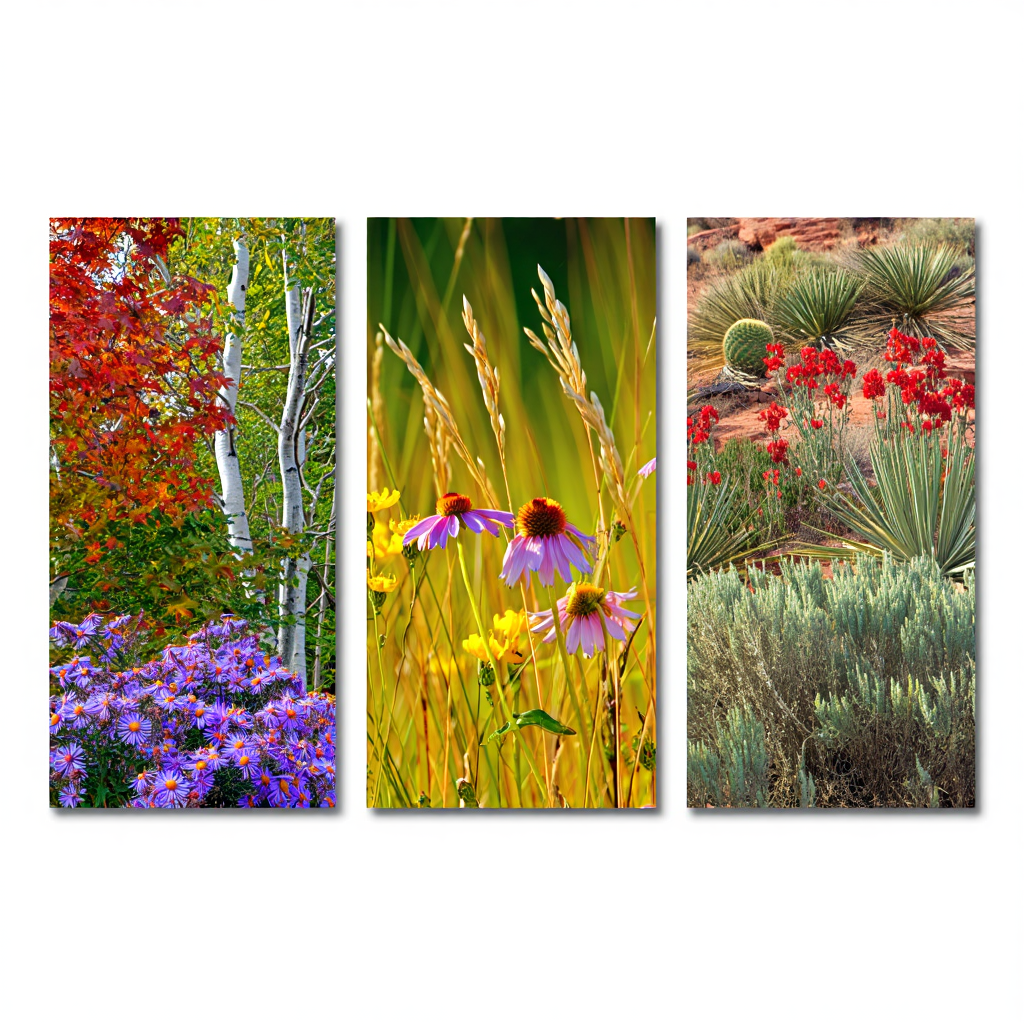
Native Plant Picks by Region
Match selections to your ecoregion before chasing color or height. Climate, soil texture, and daylight drive real-world success and lower maintenance. Looking at eco-regions rather than state lines prevents many pest and watering problems. Shoppers searching “buy native plants online USA” should filter catalogs by county or watershed for the best fit.
Regional match is where good plans begin. Climate bands, soil texture, and daylight length drive real-world success. Look beyond state lines to eco-regions when possible. That brings steady growth and fewer pest issues. Shoppers searching “buy native plants online USA” should filter catalogs by county or watershed for the best fit.
Northeast and Midwest
Cold winters and humid summers reward deep-rooted perennials and hardy shrubs. Woodland edges and prairie remnants set the palette and keep bloom timing aligned with local pollinators. Sourcing seed from nearby states improves survival and winter hardiness. That approach builds four-season interest without constant tweaking.
Steps and suggestions
- Build layers: canopy, understory, shrub mass, and groundcover.
- Use spring ephemerals under deciduous trees for early color.
- Add prairie clumps in the sunniest strip for summer bloom.
- Keep mulch off crowns to prevent rot after late snow melt.
Shoppers comparing best native plants by region will often find a steady core of reliable species that hold shape through harsh winters. A considered set gives color from April through frost without needing constant tweaks.
Bullet list: simple regional starter ideas
- Northeast shade edge: serviceberry, ostrich fern, foamflower, and Pennsylvania sedge.
- Great Lakes sun bed: little bluestem, black-eyed Susan, blazing star, and New Jersey tea.
- Mid-Atlantic street strip: river birch, switchgrass, blue mistflower, and lowbush blueberry.
Southwest and West Coast
Long dry spells define design choices out West. Thin soils and hot winds demand drought-ready roots and waxy leaves that rest between bloom bursts. Proper spacing and air flow lower disease risk in marine layers. A well-spaced plan beats crowding and keeps summer heat from overwhelming new installs.
Steps and suggestions
- Prioritize deep watering during establishment, then taper fast.
- Replace lawn slivers with gravel ribbons and drip lines.
- Mix evergreen bones with seasonal pop for year-round curb appeal.
- Keep reflective hardscape to a minimum to avoid heat bounce.
Research spotlight: A 2023 study across Los Angeles neighborhoods found winter bird richness and abundance significantly higher in yards with roughly 80% native cover (2023, Los Angeles). Picking by region protects time and budget, which keeps projects on track.
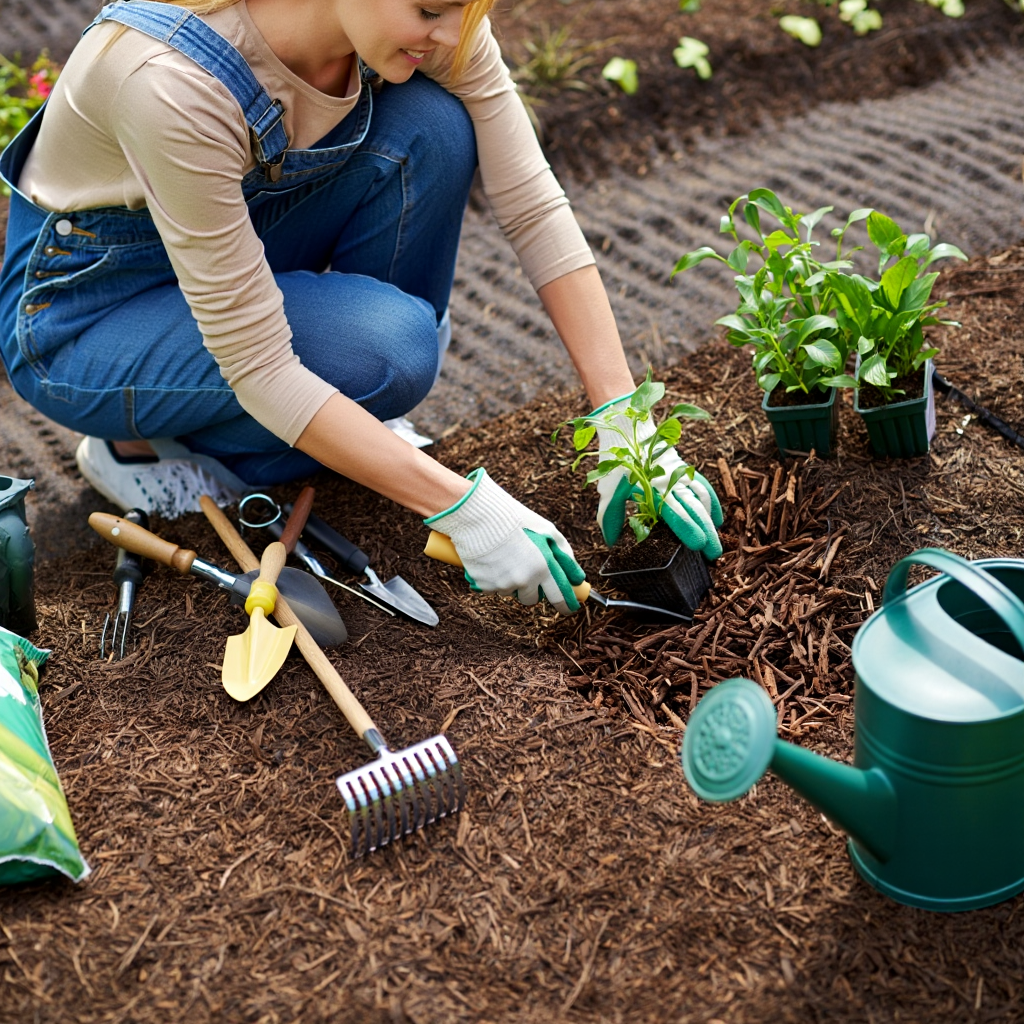
How to Start a Native Plant Garden
A phased plan beats an all-at-once makeover, and a small pilot bed proves the concept. Clear sequencing sets budget, testing, and early wins that teach the site’s quirks. Starting small reduces mistakes and shows which species thrive under real conditions. That measured approach helps native plants landscaping USA deliver visible progress in the first season.
Ambitious design can stall without a simple roadmap. A clear plan sets budget, sequence, and early wins. Start with one bed, learn the watering rhythm, then scale up. That approach suits a tight schedule and teaches what thrives on site. It also helps native plants landscaping USA deliver results the first season.
Soil Preparation Tips
Right soil structure unlocks root growth and steady moisture for young plants. Compaction and poor drainage sink many first-year installs by choking roots of air. Site testing with a shovel and jar avoids costly over-amendments. Small grading moves and smart water capture do more than dumping bags of soil.
Step-by-step
- Do a jar test to eyeball sand, silt, and clay fractions.
- Loosen compacted zones eight to ten inches deep.
- Add compost where biology is weak; skip over-amending rich loam.
- Shape broad swales and shallow berms to slow and sink rain.
- Lay drip lines first, then plant, then mulch.
A tidy edge and repeated blocks add a clean look without heavy pruning. That supports eco yard design goals on modest budgets and keeps beds easy to service through summer heat.
Comparison table: site prep choices
| Task | Quick Method | Long-Term Method | Best Use Case |
|---|---|---|---|
| Weed knockdown | Mulch sheet 6–8 weeks | Solarize 8–12 weeks | Beds with invasive seed bank |
| Soil lift | 1–2” compost | Seasonal topdressing | Thin soils, new builds |
| Watering | Hose rings | Zoned drip with timer | Any bed over 50 sq ft |
| Grading | Rake only | Mini-swales/berms | Slopes and downspouts |
“Plants – from the smallest ground cover to the tallest tree – are what support and sustain insect life.” — Doug Tallamy, University of Delaware. Tying irrigation to plant communities that actually feed insects keeps the yard alive, not just green.
Easy Plants for Beginners
Starter species should forgive minor mistakes with water and sun. Sturdy clumps that outcompete weeds help keep maintenance light in the first year. Repeated drifts calm the view and simplify care as roots establish. That palette gives confidence before bigger changes roll out.
Step-by-step
- Pick three structural anchors, then two fillers, then one groundcover.
- Plant in drifts of three to five for visual calm.
- Water deeply, then leave soil to dry between cycles.
- Clip seedheads only where self-sowing is not wanted.
Shoppers who look up native flowers USA generally chase bloom time and height first, then fold in foliage texture. That approach keeps things balanced while you learn the site’s daylight shifts.
Don’t over-plant the first bed. Six to eight species, repeated in drifts, beat a crowded mix that needs constant edits.
A careful setup plus forgiving plants turns a test bed into a template for the whole yard.
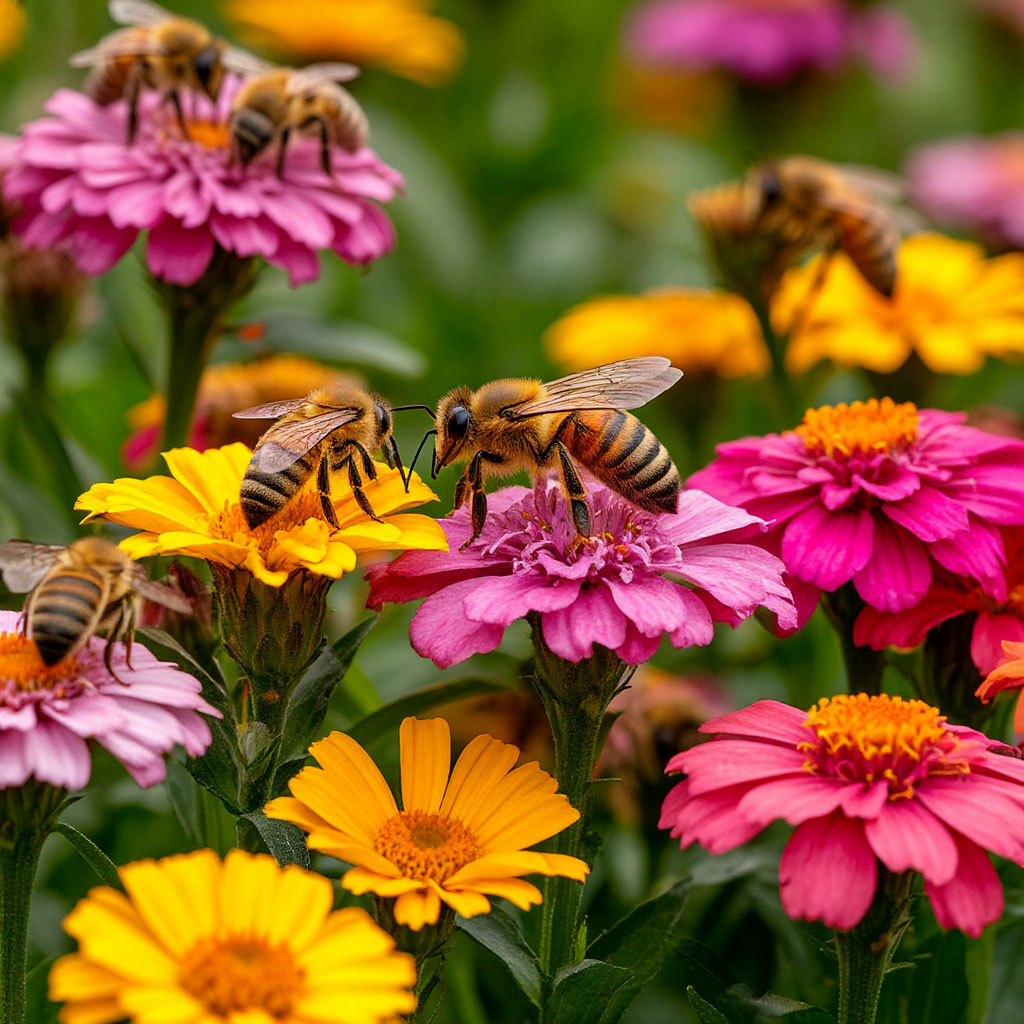
Supporting Wildlife Through Landscaping
Layered plantings supply food, cover, and nesting sites across the year. Flowers alone cannot carry habitat goals without woody structure and groundcover. Water points, brushy corners, and leaf litter make the plan complete. That is the heart of landscaping for wildlife in small suburban lots.
Wildlife needs structure, water, and safe travel lanes. Flowers alone cannot do the job. Think in layers from canopy to groundcover and connect those layers with small corridors. Bird baths, brush piles, and patches of leaf litter round out the plan. That is the core of landscaping for wildlife on a small lot.
Pollinators and Birds
Staggered bloom time feeds bees, moths, and butterflies from spring through frost. Seedheads and berries carry birds through winter and lean periods. Larval host plants keep visitors on site rather than passing through. This turns a static bed into a self-sustaining system.
Steps and tips
- Map bloom by month, then plug gaps with different genera.
- Leave hollow stems over winter for nesting insects.
- Add a shallow water source and clean it weekly.
- Keep one brushy corner for wrens and thrashers.
“Trim pithy or hollow plant stems to knee height and leave them standing.” — Heather Holm, biologist and pollinator conservationist. That small habit produces ready-made nesting sites each spring without extra hardware.
Research spotlight: A PNAS study in D.C.-area suburbs linked nonnative-heavy yards to lower chickadee reproduction because caterpillar biomass dropped (2018, Washington, D.C. metro).
Creating a Balanced Ecosystem
Diversity checks pests and smooths weather shocks across seasons. Strong root webs hold soil during storms and share moisture through fungal networks. Mixing evergreen structure with seasonal perennials keeps cover and forage available. That balance reduces maintenance as the system stabilizes.
Steps and tips
- Mix woody layers with perennials and groundcovers.
- Pair nectar plants with larval hosts in each bed.
- Use water catchment to backstop summer dry spells.
- Keep at least a third of the bed evergreen for winter cover.
Some designers rely on native grasses USA to stitch perennials into a cohesive whole. Others pick sustainable plant choices that double as privacy screens and wind breaks.
Keep something blooming or fruiting every month. Feed waves of insects and birds, and the yard stays lively without gimmicks.
Thoughtful structure invites life in and lets it stay.
One helpful list for quick planning
- Choose a canopy or tall backdrop that frames the view.
- Layer one mid-sized shrub mass for shelter and berries.
- Fill large gaps with long-blooming perennials.
- Edge beds with tough, low groundcovers to block weeds.
Common Mistakes to Avoid
Avoid chronic overwatering and random mixes of imports that fight the site. Overly wet roots suffocate, while thirsty exotics drain budgets and time. Re-zoned irrigation and smarter species lists fix most issues fast. Consistent native plants landscaping USA practice turns quick fixes into steady routines.
Yards fail when watering stays constant across zones and plant choices ignore soil and sun. Many beds drown roots while others stay dry. Fast fixes include re-zoning irrigation and removing the worst offenders. After that, fill the gaps with species adapted to local conditions. Consistent native plants landscaping USA practice turns those fixes into routines that stick.
Overwatering
Constant moisture starves roots of air and breeds disease in mulched beds. Yellowed leaves, algae on mulch, and mushrooms around stems are early signals of trouble. Deep, infrequent watering grows sturdier roots than frequent shallow cycles. Smart timers and soil probes help tune schedules as weather shifts.
Steps and tips
- Use a moisture meter before each irrigation change.
- Water at dawn to reduce loss and leaf disease.
- Run drip long and slow, then rest the zone.
- Adjust emitters by plant size after the first year.
Federal and utility playbooks point to sizable irrigation cuts when climate-appropriate plantings, drip, and mulch align. That is not theory; it is field practice baked into public programs across arid metros.
Planting Exotic Species
Imports can become invasive, starve local insects, or demand constant care. They often fail in heat bursts or unexpected freezes that natives shrug off. A short audit of species lists highlights risky plants that should go first. Replacements from regional stock prevent years of extra work.
Steps and tips
- Identify non-native species with a local extension guide.
- Replace troublemakers one bed at a time.
- Prioritize regionally sourced stock for replacements.
- Monitor for resprouts the first two seasons.
“I see our results as a step-forward toward allowing our urban and suburban landscapes to be shared with biodiversity.” — Desirée Narango, ornithologist (Smithsonian/UDel). The path is clear: plant communities that feed insects sustain birds and stabilize yards.
If a species needs constant water or sprays, replace it. Native or regional alternatives will do the job with less fuss and lower cost.
Good maintenance and smart species choices prevent most headaches.
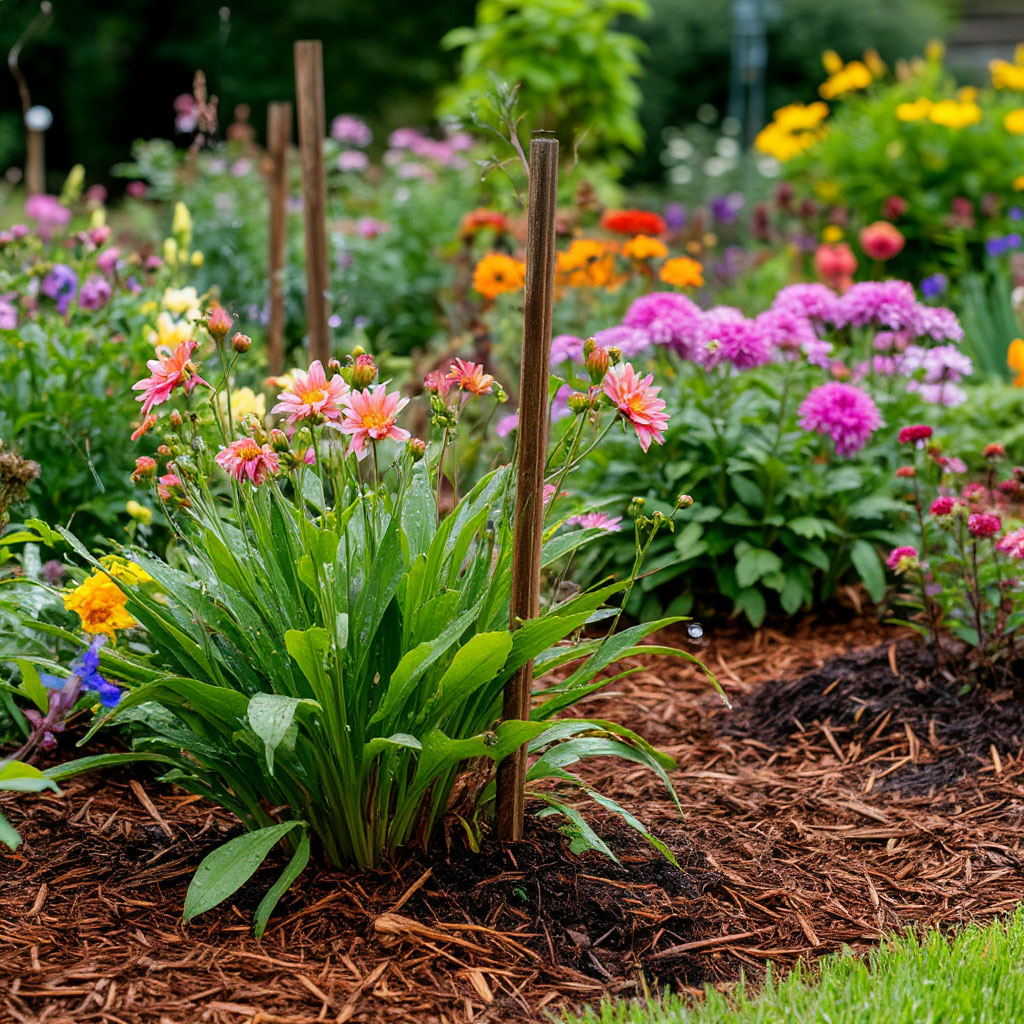
Regional Planting, Style, and Sourcing Notes
Prioritize structure, then color, and source from reputable growers with transparent practices. Repeating forms and textures creates rhythm that reads as intentional. Seasonal layering keeps interest high without heavy pruning or watering. Careful sourcing supports sustainable plant choices that hold up in heat waves.
Design should look intentional without feeling stiff. Repeating forms and textures creates rhythm. Seasonal layers keep the yard lively twelve months a year. Shoppers who value sustainable plant choices should scan supplier pages for seed provenance and pesticide policies. That diligence pays off during the first hot spell.
Many homeowners start with a beginner native garden along a fence or mailbox strip. The same playbook scales to a full front yard with hedges and paths. Browse local nursery maps before searching “buy native plants online USA,” and compare availability by pot size and timing. Delivery windows often line up with regional planting dates in spring and fall.
Plant buyers also match regional accents to architecture. Prairie clumps read modern around steel or cedar. Coastal evergreens frame craftsman lines with ease. People collecting regional native landscaping ideas can blend these styles while holding a coherent plant list.
Quick Style Frameworks That Age Well
Pick one backbone look and use it from curb to patio for visual calm. Repeating plant groups in drifts unifies long beds and simplifies care. Allow seasonal change without losing shape by keeping evergreen bones in the mix. Thoughtful lighting on paths and feature trees extends the show after sunset.
A clean framework keeps care simple. Choose drifts rather than one-offs and repeat plant groups to calm the view. Allow for seasonal change without losing structure. Light up paths and feature trees for evening interest. That approach lifts any yard guided by native shrubs and long-blooming perennials.
Prairie-modern schemes often pair fine blades with bold seedheads. Woodland edges use layered greens and filtered light. Dry garden sets lean on stone textures and sculptural forms. Folks who chase eco-friendly landscaping plants can hit that balance with reclaimed materials and efficient lighting.
Long beds benefit from rhythm every ten to twelve feet. Use a repeating grass clump or dwarf shrub to stitch the scene. Fresh mulch and crisp edges keep the layout sharp. A few well-placed containers add height without a mess.
Seasonal Care in Brief
Small, regular tasks keep the system humming through weather swings. Late-winter cutbacks wake perennials while leaving some stems for insects. Topping up mulch and checking drip after freezes protects roots as seasons turn. Smart watering and selective deadheading hold bloom and reduce stress.
Cut back perennials late winter to release new growth. Leave some standing stems for insect habitat. Top up mulch where it thins and check drip lines after freeze events. Deadhead where self-sowing is not wanted, and let seedheads stand where birds need food. This routine fits any lane of native plants landscaping USA in small or large yards.
Hot spells call for shade cloth on new transplants. Windy weeks need extra checks on stakes. Rains reveal low spots that can be shaped into shallow collection basins. Fall remains the prime time to plant in many zones. Those windows help wildlife-friendly yards settle before extremes return.
Gardeners in hotter states lean into reflective heat management. Light gravel, open spacing, and air flow protect crowns. Folks in colder regions guard late buds from heavy spring snows. That flexible mindset supports drought-resistant natives when weather swings hard.
Research spotlight: EPA WaterSense guidance and federal facility playbooks note landscapes using climate-appropriate plants and efficient irrigation can materially cut outdoor demand, with design doing the heavy lift (2017–2021, USA).
FAQ
How do I pick plants that actually fit my climate?
Check your ecoregion map first, then shortlist species proven in nearby counties. A region-based list beats a national catalog every time. Pair that with a small pilot bed to confirm fit. Searches tagged best native plants by region give a fast starting point.
Why do weeds keep returning after I remove lawn?
Weed seeds sit in soil for years, and disturbance brings them up. Lay mulch after planting and avoid bare ground. Water deeply but less often to favor your perennials. Filling space with low-maintenance native plants reduces open soil and sunlight for weeds.
What’s better for a small yard—perennials or shrubs?
Blend both. Perennials add seasonal change and nectar, while native shrubs anchor structure and provide cover. A balanced mix cuts chores across the year and pairs well with native plants vs exotic plants lessons learned over decades of urban gardening.
How can I help pollinators without a huge makeover?
Add bloom in shoulder seasons and leave some stems standing through winter. Keep a shallow water source clean and nearby. A steady mix of pollinator-friendly native plants does more than one big mid-summer show.
Why is drip irrigation recommended for native beds?
Drip delivers water at the root zone and fits hydro-zoning. It also works with mulch, which lowers evaporation. Programs that pay for turf removal commonly pair conversions with drip for durable savings, as shown in utility studies.
Before the wrap-up, here’s a clear, step-by-step walkthrough on design, regional plant picks, and water-wise setup. It’s a practical bridge from this guide to action for native plants landscaping USA—turning plans into resilient beds with smarter irrigation.
People crave landscapes that look great and work with the land. The move toward native plants landscaping USA makes sense for wallets, wildlife, and water. Pick by region, prepare the site, and install in phases. Keep watering smart and pruning light. A yard grown on native grasses USA and sturdy shrubs will stand up to heat, wind, and busy schedules.
Design can stay stylish without heavy upkeep. Local plant lists offer texture, color, and shelter in every season. Perennials and native shrubs knit the space together while trees frame the view. If buying online, choose reputable sources and plan deliveries around planting windows. The next step is simple—draw a small plan, order the first batch, and let the garden teach the rest. Download the checklist to turn advice into action. It’s a hands-on tool for native plants landscaping USA—from picking species to setting up irrigation and avoiding costly mistakes.
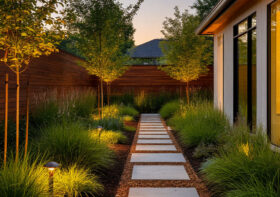
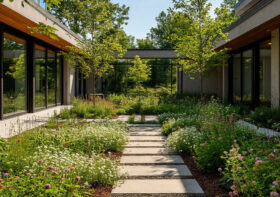

Leave a Reply